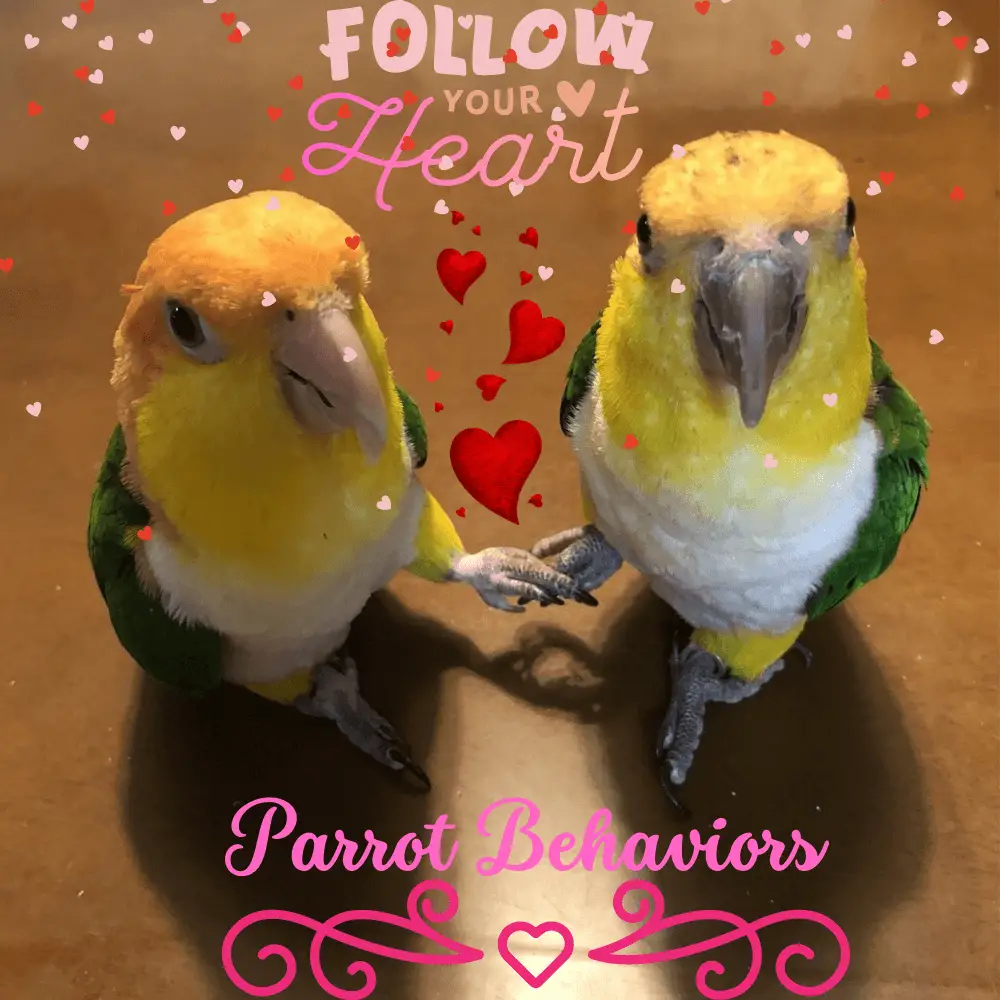
How to understand the character of parrots? Parrot behaviors: It should be known that parrots have great ease of adaptation, however, it is up to you to educate and solicit it. The behavior of your parrot will depend on yours largely towards it. Like all birds, you’re going to have to take care of them, spend time with your parrot, and learn how to deal with the different problems you’ll likely face over time.
Speech imitation and screaming
The character of Parrot
Parrot behavior

The little parrot also likes to test humans by being threatening, it is a game for him, ignore his behavior and you will become very good friends. In conclusion, the Parrot is a bird happy to live and that shows, it testifies to a great joy of living permanently. They are simple parrots that can play for hours. They love human company and follow their favorite human everywhere, limiting the pot of glue. However, they have a strong personality and although not resentful, they can be difficult, at times, like any parrot. Many people compare the Red-fronted parrot to the Amazon parrot because family life suits it very well.
Bites and pinching
Fear
Your way of dressing can scare off the parrot that does not recognize you, change and reassure it, and only take and touch it when it is calmed down. An unknown noise or object can also scare him. If it’s on or near you, it could pinch you. In nature, it is this behavior that the parrot has with his companion, he pinches him to make him move to a safer place.
Learning
A young parrot will first pinch you to discover your finger, hand, ears, etc.; in the same way, he tastes everything that passes under his beak. Then, it will squeeze harder and harder to know how far it can go and with what force you need to pinch yourself to make you react.
Below, I offer you methods of education for your parrot.
The game
This is a normal behavior in parrots and natural. Parrots are gregarious birds and sometimes fight their partners by play. When the parrot does not have a winged companion, it is to his toys that he turns, as if he were facing a rival.
It is better to avoid going near your parrot in these moments because he may take it as an invitation and will think that you want to play with him.
Parrots love to use toys like chewing sticks for entertainment.
Attract attention
Your parrot wants you to be interested in him, want a hug or play with him if, after a few attempts, screams, and the like, you do not take care of him, he may pinch you.
A bad past
Parrots are very intelligent beings with an excellent memory. If they have been abused, abandoned, or imported, their only reflex will be aggressiveness and therefore, bite. It will take a lot of gentleness and patience for your parrot to trust the man again.
Disturbance
Never disturb a parrot that eats, prepares to sleep, or sleeps. Cohabitation between Parrot and Dog: We give this same instruction to dogs, the reactions are identical.
Excitement
You play with your parrot and it is very angry, a beak can be given, unintentionally. Stop the game, and wait for your parrot to calm down before returning to see it.
Jealousy and possessiveness
Parrots Get Jealous: These are valid for both a living being and an object.
Your friend comes to kiss you while you have your parrot on your shoulder, the parrot is jealous, and does not appreciate this mark of tenderness, he pinches you or your friend. Be careful if your parrot has this tendency to jealousy.
If you have several parrots, each will have their favorite toys and will not like another to touch them.
Pain
Like any living animal, a parrot will bite if it is injured or sick, this behavior is instinctive.
This list is not exhaustive, we must not forget that parrots have, like humans, moods and emotions. Sometimes there is no explanation to justify pinching but bites for no reason are exceedingly rare.
At first, avoid that your parrot lands on your shoulder because you no longer have control, you can not anticipate its reactions since it is no longer in your field of vision.
Favor the arm or the head until you know your parrot well and you have complete confidence in him.
Observe your parrot, and learn to recognize the signs, behavior, and pace it has before taking action, this will allow you to avoid being pinched. The most common signs before an attack are erect feathers, fan-tail, absent gaze, contracted pupils, head back and of course, an open, threatening beak. Finally, know that a parrot is not a toy, it also has the right not to want to do what you would like it to do and will make you understand it, pinching you if you insist too much.
Education and learning
Do not hesitate to do a lot of circuses, to exclaim and why not, applaud.
The parrot will appreciate it a lot. This reaction is valid both to reward him for having obeyed the reminder but also following a pirouette performed (and they will be numerous with the Parrots).
Ethology = ethos = behavior or mores
Science concerns the study of animal behavior in relation to its environment.
Ethology is to describe and try to understand the parrot behaviors that characterize a species.
The objective of ethology and ethogram
The objective is to list the parrot behavior that each species possesses.
The term ethogram designates a complete inventory of the parakeet behaviors of a species.
However, the word ethogram can be used to denote the detailed description of a category of behavior ( for example, we can speak of the social ethogram of an animal when describing all aspects of the social behavior of that animal ).
Whether it is to obtain their food, reproduce, take shelter, or escape predators, animals must organize their activities, and use strategies that meet their needs.
These acts, these ways of acting, can therefore be considered as units of action responding to a need.
We could use action units to classify their functions and parakeet behaviors.
Behavior inventory table
| Individual behaviors | Social behavior |
| Ingestion / Elimination Exploration Locomotion Grooming (solitary) Thermoregulation Rest Protection (shelter, defense) Playful game (solitary) |
Reproduction ( sexual and parental ) Social organization Social hierarchy Territoriality Grooming ( mutual ) Aggression ( agonistic and affiliation parrot behaviors ) Playful ( group ) play |
The behavior inventory table gives an example of the classification of the various categories of behavior that can be found in a species.
However, we must consider as individual behavior any activity which sustains the individual himself. It is sometimes difficult to make a clear distinction.




















